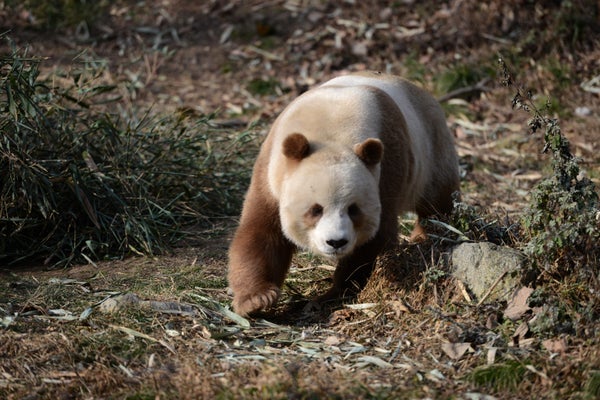Rare Brown Panda Mystery Solved after 40 Years
Chinese researchers have found the gene responsible for the brown-and-white fur of a handful of giant pandas
Qizai, the world’s only captive brown-and-white panda.
Heng Guoliang/Visual China Group via Getty Images
Not everything in life is always black and white. Neither are giant pandas.
For years, scientists — and the public — in China have been fascinated by Qizai, the only brown-and-white panda in captivity. Found abandoned in the wild, he lives at Louguantai Wild Animal Breeding and Protection Center in Xi’An. Only seven brown-and-white pandas have ever been documented — all from Qinling, a mountain range in the Chinese province of Shaanxi.
Now, a team of researchers has found out why the 14-year-old male bear has such unusual fur, with the findings also likely to apply to wild brown pandas.
On supporting science journalism
If you’re enjoying this article, consider supporting our award-winning journalism by subscribing. By purchasing a subscription you are helping to ensure the future of impactful stories about the discoveries and ideas shaping our world today.
The brown pandas are missing a short sequence of DNA in Bace2, a pigmentation-related gene, according to a study published today by the Proceedings of the National Academy of Sciences.
Bears in brown
Qinling pandas are “rather different” from those in Sichuan — the province that most giant pandas (Ailuropoda melanoleuca) inhabit — according to Hu Yibo, a co-author of the paper.
“Previous studies suggested that Qinling pandas may have been separated from Sichuan pandas around 300,000 years ago,” says Hu, a conservation geneticist at the Institute of Zoology at the Chinese Academy of Sciences (CAS) in Beijing.
Hu and his colleagues studied the genomic information of three ‘family trios’ — a pair of panda parents and their cub — associated with two brown pandas, along with the genomes of 29 other…
Read the full article here







